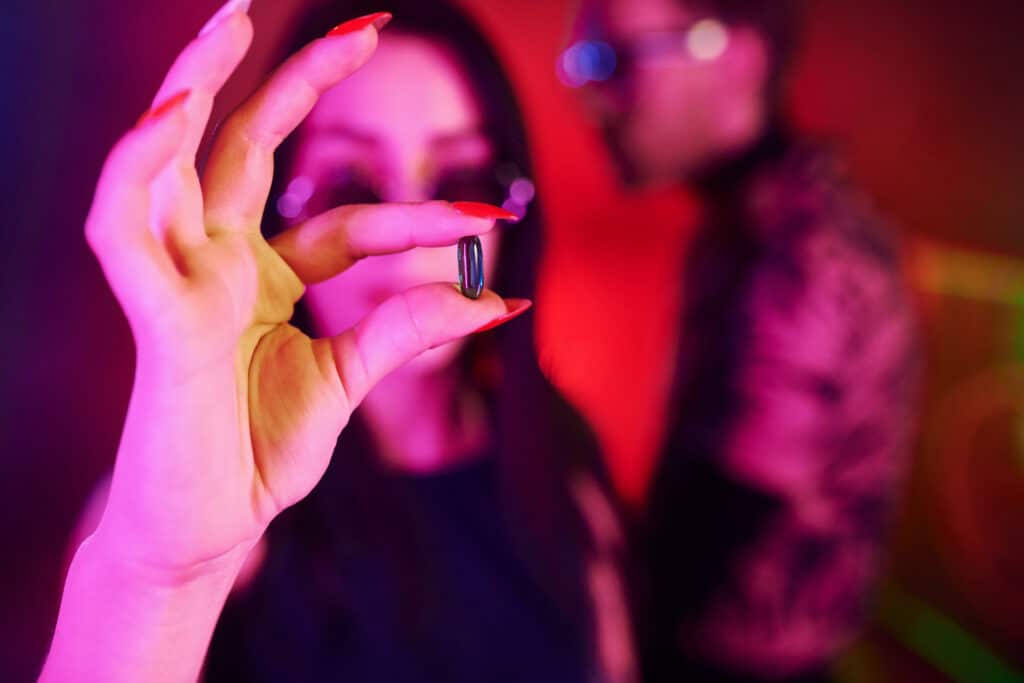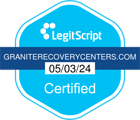
This class of drugs includes things like LSD, ayahuasca, PCP, ecstasy and mescaline. Marijuana also is considered a hallucinogen, though it can also have stimulant and depressant effects on users. Some hallucinogens are poisonous. An example of this is jimsonweed, which is sometimes used by teens. This plant can cause serious illness and death and should never be ingested in any way.
How Hallucinogens Work
Hallucinogens affect the brain. They often have a structure comparable to naturally occurring neurotransmitters in the brain. Neurotransmitters are chemicals that are released from the end of a brain cell or neuron. They transfer energy or information to other structures in the body. These could be other brain cells, muscle cells, or other kinds of tissue in the body.
Specifically, hallucinogens have been linked to serotonin receptors in the brain. They affect regions including the prefrontal cortex. The prefrontal cortex is an area of the brain linked to things like perception and mood. This may explain why people have such an altered experience of the world when taking them.
Hallucinogens are powerful drugs, and many occur in nature. Human beings have been using hallucinogens for thousands of years. Often, they have been used in religious or cultural ceremonies. THC in marijuana and psilocybin in shrooms are the compounds that provide them with hallucinogenic properties.
This class of drugs is still not fully understood. Many are still being synthesized today so quickly that regulators can’t keep up with them. One important takeaway for everyone should be to respect these drugs. Even the hallucinogens that can grow almost anywhere can have serious effects on you, your body, and your life.
The effects of hallucinogens on a person can be positive, negative, or neutral. It’s not entirely clear why different people have such a variety of responses to hallucinogen use. These drugs have a lot of potential and have consistently been studied by researchers for decades. Someday, they may possibly be a source of relief to people who are suffering. However, they also have the potential to cause great suffering for others.
Hallucinogens as Treatment
Most hallucinogens are classified as illegal drugs in the United States. They are often used recreationally. There are some hallucinogenic drugs that have been used therapeutically, at least in clinical settings. LSD is one example of this.
LSD was first created in the late 1930s and has been studied closely for over 50 years. It is widely regarded by researchers as a safe drug. At different times, it has been studied for use as a treatment for conditions like alcohol use disorder and anxiety. So far, studies on the subject are inconclusive. But scientists are continuing to investigate this particular drug.
Another popular hallucinogen, ayahuasca, comes from a plant. Ayahuasca has been important in the cultures of some Amazonian groups for centuries. More recently, it has been used to treat people with post-traumatic stress disorder. Often, people seek out ayahuasca ceremonies after they have exhausted the treatments offered by Western medicine. For people who have not felt any relief from traditional talk therapy or prescriptions, this hallucinogen has proven to be an attractive alternative. Ayahuasca has been traditionally used among indigenous peoples in South America.
Shamans administer ayahuasca to people during ceremonies, usually held at night time. The ceremonies can last for several hours. Ayahuasca is usually taken by drinking. It’s almost like a kind of tea. Among Americans, Brazil and Costa Rica are popular destinations for ayahuasca retreats. Ayahuasca has been studied in medical settings as a potential treatment for substance use disorder, depression and other conditions.
Ecstasy has also been looked to as a potential treatment for disorders, including PTSD. When veterans and victims of crime with PTSD were given MDMA, it reduced symptoms in many of them. In fact, by the end of the study, almost half of the group that received the drug no longer met the diagnostic criteria for PTSD. This needs to be studied more. However, it could potentially be a real gift to people with PTSD, a disorder that is notoriously difficult to treat.
Recreational Use of Hallucinogens
Hallucinogens are also popular for recreational use. Currently, in the US, marijuana, magic mushrooms, and LSD are among the most commonly used hallucinogens. Some people try hallucinogens because they’re seekers. They believe that using these drugs can help open their minds, improve their artwork or even provide them with spiritual experiences. Other users come to things like shrooms as part of general experimentation with illegal drugs.
During the 1960s, hallucinogens were often called psychedelics. Many artists and musicians experimented with them, and psychedelics broke through into the awareness of mainstream Americans. Prominent pop-culture figures like the Beatles experimented with LSD. Writer Timothy Leary was a huge advocate for using LSD. These artists believed that psychedelics were positive for them and their creativity.
It’s important to note that people like Syd Barrett of Pink Floyd didn’t fare as well. Barrett believed that LSD helped to unlock his creativity, too. However, there’s some suggestion that it influenced his decline. Eventually, he became so mentally ill that he had to leave his music career behind. It will never be clear how much or how little his drug use impacted his mental health. But it is worth noting that it didn’t seem to benefit him very much in the long run.
The Downside of Hallucinogens
Unlike the Beatles, some people have horrible experiences when using hallucinogenic drugs. These are often known as bad trips. When someone has a bad trip, they may be seeing and experiencing things that are terribly scary or threatening to them. No one around them can sense the same phenomena. Because of this, one person’s bad trip can be confusing and frightening for their companions, too. Anyone who uses psychedelics should consider doing it with other people around. They may be able to help them in the event of a negative experience.
PCP or angel dust is one hallucinogenic drug that became widely known for negative side effects during the 1970s and 1980s. There were even several after-school specials made about this drug and the consequences it could have on young people’s lives. PCP can be taken in a number of ways. Most often, it’s smoked. During the 2010s, angel dust made a comeback. Again, it was associated with strange and even violent behaviors. People using PCP seemed to have encounters with law enforcement and hospitals more often than the users of many other substances.
Some people have very negative trips on hallucinogens. They might see the environment melt around them when they’re on the drug. Others have hallucinated that people are transforming into monsters. Sometimes, a user will become aggressive while they’re on a hallucinogen. Bad trips are no joke: some people have been hospitalized during them. Others have been charged with embarrassing crimes they committed during the trip. One example of this is indecent exposure due to taking their clothes off in public.
Users of LSD and PCP in particular may have to deal with flashbacks at a later date. Basically, the person re-experiences the trip they were on after taking the drug. If they good experience, this might be pleasant, if confusing. But people can also have flashbacks of negative trips, which can be scary. It can be disconcerting and disruptive to have a flashback. They can occur a long time, even years, after the initial experience.
Hallucinogen Persisting Perception Disorder (HPPD) is recognized by the DSM. This disorder is found in people who feel out of control and distressed due to recurring flashbacks. One person with this disorder experienced flashbacks in her mid-30s. She only took hallucinogens for about a year in her late teens. The sporadic, spontaneous nature of these flashbacks was a challenge for her, and it took several tries to find a medication that helped remove this problem.
Substance Use Disorder and Hallucinogens
Many people try hallucinogens once or twice. They may be looking for relief from a problem like PTSD, or they may just be experimenting. Some people do develop a hallucinogen habit. There are several signs that someone’s use of hallucinogens has crossed a line into unhealthy behavior.
For example, the user might develop a tolerance to their hallucinogen of choice. They will find that they need to take more and more to achieve the same effects. People who have developed a dependency on hallucinogens may also start to devote more of their time to them. That could mean spending less time with family and friends, giving up existing hobbies, or showing an unhealthy focus on acquiring more drugs.
Detox and Withdrawal
Most people who take hallucinogens recreationally do so only occasionally. But some become physically dependent on these substances. Sometimes, withdrawal can accompany the use of hallucinogens. When people are coming off PCP, they might become anxious and afraid. Physical symptoms of withdrawal can include things like diarrhea and heavy sweating. Seizures and even hallucinations can occur. If you or a loved one has become dependent on a hallucinogen, it’s important to get help to quit.
A medically supervised detox can help to keep people safe as they start their recovery journey. Granite Recovery Centers provides medical detoxification for people who do not need immediate medical intervention, are not a danger to themselves, and are capable of self-evacuation in the event of an emergency. Throughout a detox protocol, medical professionals will check on clients’ vitals to monitor how they’re doing. They may even provide some medications to assist with side effects. Inpatient rehab can be a good next step for people who have completed detox. Some clients will continue their recovery in therapy or in 12-Step groups. Others may need more support. They might benefit from outpatient programs or from spending time in sober living.
At Granite Recovery Centers, we provide help for people at every step of the way. We use a variety of methodologies in treating substance use disorder. These include solo and group therapy, 12-step meetings and even medication-assisted treatment. We also offer programs specifically for uniformed professionals and women. We understand that some groups of people may deal with a trauma that’s fairly unique to them. Our goal is to give all of our clients the tools to build a new and better life, no matter where they’re starting from.

















